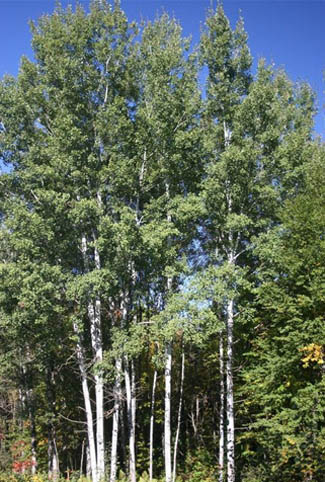 Populus tremuloides
Populus tremuloides
The quaking aspen has the largest native zone of any tree in North America, spanning 47 degrees of latitude (equal to half the distance from the equator to the North Pole), 110 degrees of longitude (nine time zones), and elevations from sea level to timberline. The leaves are almost round with a flat petiole (the stalk that joins a leaf to a stem) allowing it to “tremble or quake” with the slightest wind. This tree spreads mainly by root suckering, sending up clones through the root system. In fact, a grove of quaking aspens in Utah is the largest known living thing on Earth. Nearly 50,000 stems protrude from a single root system. The entire organism covers over 100 acres and weighs 6,000 tons. An individual tree may only live to be 60-80 years but overall, the oldest cluster of these trees is believed to be 8,000 years old.
This tree is used by humans as well as wildlife. In winter, when other deciduous trees are mostly dormant, quaking aspens can keep producing sugar for energy. Deer, moose, and elk seek shade from aspen groves in summer. These same animals consume bark, leaves, buds, and twigs of quaking aspens throughout the year. Ruffed grouse are especially dependent on quaking aspens for food and nesting habitat. People use quaking aspens for fuel and to make paper, particle board, furniture, and hamster bedding.



